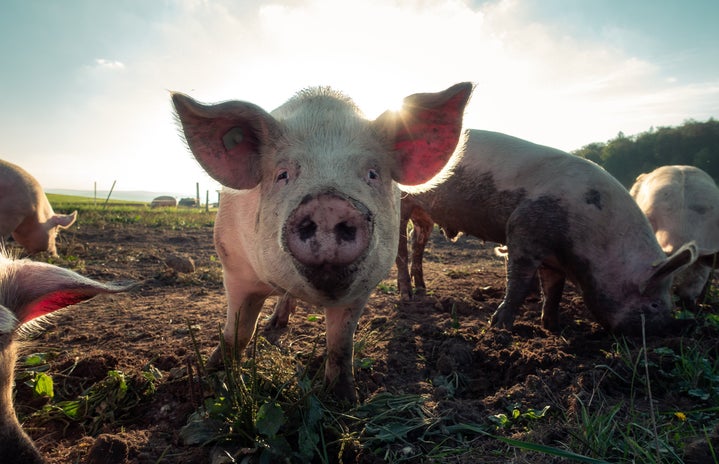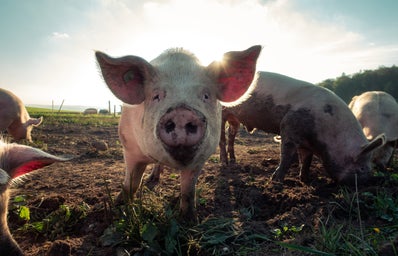How we can open our eyes and challenge unjust systemic practices.
Everyone is excited for the end of COVID-19; we can almost feel the warm rays of the summer sun on our soon-to-be unmasked faces. In a rush to get our vaccines, we saw the light at the end of the tunnel. As COVID symptoms became less dangerous and more people received vaccines, the threat of the pandemic lessened to a certain extent. However, due to the current systems in place, COVID may be a single disaster of many to come as the spread of zoonotic diseases will continue due to the increasing proximity between animals and humans.
As soon as everyday life was snatched away as fast as one could say “corona,” many have spent their social distanced days yearning for a return to normalcy . While a “new normal” may stick around for some time, more pandemics will likely be inevitable due to the spread and increasing diversity of zoonotic diseases. Thomas Gillespie, an Environmental Science professor at Emory University, is sure that our current situation will seem mild compared to future outbreaks. A return to normal life is like a piece of cheese in a mousetrap, and we are the mouse. In other words, normal is dead.
Conventional practices, including wild-life trade, unsustainable agricultural practices, and deforestation, have more than tripled the number of zoonotic disease outbreaks in the past decade. We need to drastically rethink current food production practices as 50% of all habitable land is used for agriculture. The intensive exploitation of natural areas to produce mega plots of monoculture annuals, such as corn, causes wild animal hosts to interact with humans and livestock. With less inhabitable land, wild animals are forced into domesticated spaces where disease can spread.
In the livestock sector, a whopping 13 billion hectares of forest area are converted to croplands or pastures to produce meat products and livestock feed crops each year. High biodiversity in forest ecosystems creates a dilution effect, meaning a single pathogen is less likely to infect different species. However, current deforestation practices obliterate forest ecosystems and threaten biodiversity, giving a single pathogen the opportunity to dominate across species and spread rapidly. When 40% of forest covers are cleared, spillover rates from wild animal hosts to livestock and human populations reach optimal levels. Not only do standard practices cause an increased spread of zoonotic disease and biodiversity loss, but mass deforestation for agriculture is a significant driver of global warming.
If food conglomerates continue to drastically alter natural landscapes while destroying ecosystems and creating disease affluent environments, more pandemics will occur. COVID-19 reflects the harm inflicted upon the natural world, a failure in a flawed system. This system wipes out forests to build Concentrated Animal Feeding Operations (CAFOs) and factory farms. CAFOs raise livestock in terrible conditions by packing animals in extremely cramped quarters where pathogens can easily spread from one animal host to another.
Farming operations do not need to kill off ecosystems and forests or raise livestock in terrible conditions. However, they do so to reap the economic benefits of appealing to human taste buds. Animals are raised and fed in sick conditions, and farmers find themselves stuck within an unjust, underpaid cycle. If this cycle continues with no regard to the life it exploits, humans and animals will bear the consequences again and again with greater pandemics.
There are ways to address these problems. By supporting more plant-based community gardens, food forests, and organic food systems, we can begin to stop the increasing spread of zoonotic diseases. Additionally, community organizations that share cultural gardening practices are more likely to distribute food to members that need it most. Some participate in gleaning practices that distribute safe foods to hungry neighbors. Gleaning is a process that sources food that would otherwise be left to decompose. If 40% of crops currently produced to feed animals were used instead to feed humans, 9 billion people could be fed in 2050. One may argue that small-scale farms and gardens are not enough to create differences that disrupt the current agricultural market. Unfortunately, even as increasingly more people become vegetarians, individual choices do not affect supply chains because of market “slack” or buffers that protect the production of animals. Meaning even if the demand for meat decreases due to increasing plant-based practices, market forces and producers have ways to keep production at its current level. Despite market buffers, a greater understanding of the failures of conventional farming can help people see the truth behind their food.
When we see the dangers of normalized practices, we can open our eyes to the reality of systems driven by unjust actors. The more we see these dangers, the more we can challenge food conglomerates and create communities of activism, outreach, and support. The Earth is showing us the disasters that can take place if unsustainable farming operations continue to exploit animals and forests. We should listen up and stay alert for more to come.
**Edited By: Grace Ardito


